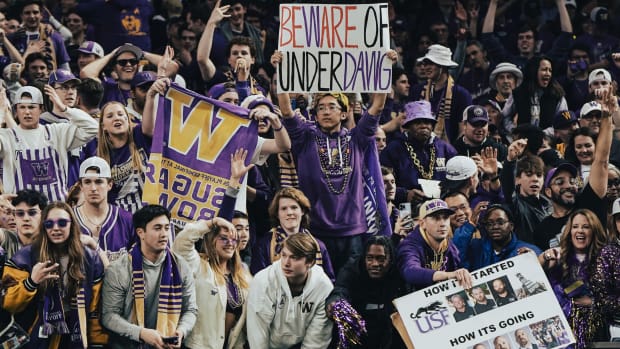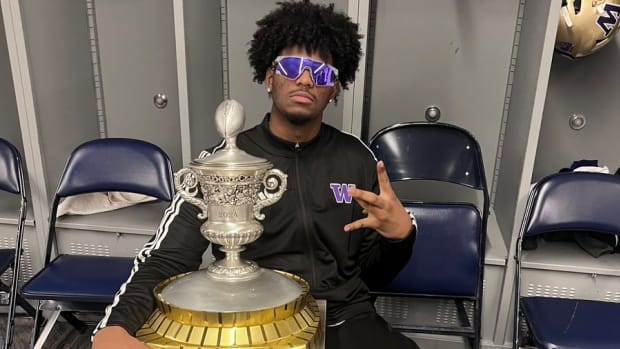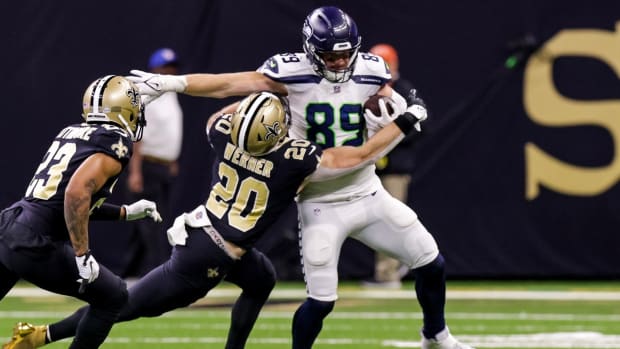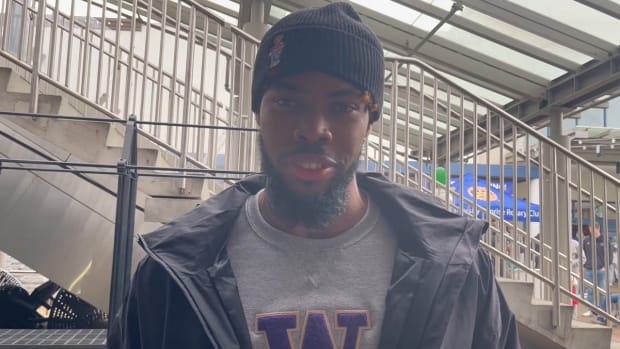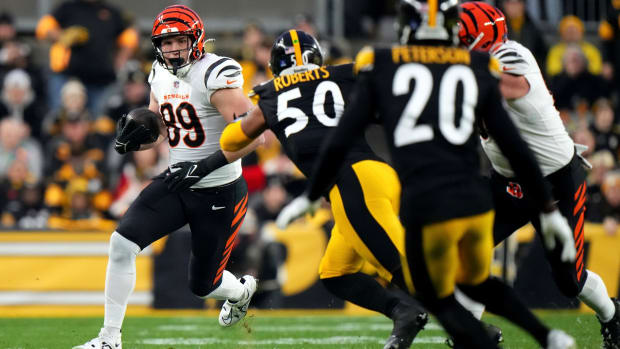Sixkiller Mania: No Turning Back for Sonny After His First Husky Season
The 1970 college football season ended, but Sixkiller mania was just getting started. Everyone in the city was on board.
A teacher at Seattle's McDonald Elementary School asked her students if anyone could name the first person to walk on the moon. A youngster answered with another question.
"Sonny Sixkiller?" he said.
There was no turning back now. Seattle had a sports celebrity like no other. He was this 19-year-old kid with the great name and equally endearing storyline -- the grandson of a Cherokee chief.
An Oklahoma senator's wife asked if she could fly Sixkiller, all expenses paid, to an Indian Affairs conference. Another half-dozen Native American groups from Oregon to Idaho wanted him as a speaker or his endorsement. Locally, he was urged to support Indian fishing rights.
Magazine writers or newspaper reporters from Los Angeles, New York and Washington, D.C., each requested an audience in Seattle with this national phenomenon. Sonny was a little bewildered by all of this attention.
"I try not to let anything that goes on get to me," he said. "The hardest thing to do is to be an average guy."
Sixkiller was invited to the Sammy Baugh Award dinner thrown by the Touchdown Club of Columbus in Ohio. The local papers said Sonny turned it down. Truth was, Husky coach Jim Owens wouldn't let him go, unsure how the young quarterback would handle the attention.
A new network TV show called "Route 66" asked if Sonny would screen test for a Cherokee Indian role. The school declined on his behalf.
When spring football came around again, a writer asked to shadow the quarterback throughout the month-long drills and even asked if he could "live" with him.
Sixkiller put his foot down on that one. He made the North Seattle rental house he shared with Husky defensive backs Bill Cahill and Larry Worley off limits to all outsiders.
He still posed for photo shoots for everyone from Street and Smith's football preview magazine to the UW Daily. The school paper asked in a headline if Sonny could save Owens' job, surprising the quarterback.
Everyone was writing and talking about Sixkiller. He didn't look at any of it, though. He had a pragmatic reason.
"I know what happened," Sonny said. "I don't have to read about it."
While he gingerly lifted small barbells with his teammates inside the cramped basement weight room in the Tubby Graves Building, fans were upstairs clamoring to buy up every last season ticket.
Three months ahead of the 1971 opener against UC-Santa Barbara, the UW had a run on season tickets, easily surpassing the previous sales record of 32,062.
With 14,000 seats annually set aside for students, available game tickets would be hard to find come fall. Everybody wanted to share in the fun.
If he wanted burgers at Dick's Drive-In or other fast-food outlets, Sixkiller had to go with teammates, scrunch down in the backseat of the car and let someone else fetch the food for him, lest he find himself surrounded adoring fans.
By now, everyone knew who Sonny Sixkiller was. Former Husky running back Harvey Blanks, thrown off the team in 1969 after clashing with Owens, was working a job in Dallas that summer with a guy who kept pestering him about the UW quarterback. Blanks couldn't figure out why he had so much interest.
Finally the other person revealed who he was: Texas Christian starting quarterback Steve Judy. His Horned Frogs were coming to Seattle to face Sixkiller and the Huskies in September. He was cocky like Sonny, too.
"You tell Sixkilller when we get up there, we're going to change his name to Six Kitten," Judy said.
